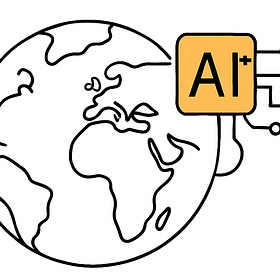Making Money in a Fractured Global Market
Here’s how business leaders are winning across borders.
For business leaders today, a pressing question is:
How do we make money across borders when the old playbook no longer works?
Despite talk of the “end of globalisation,” businesses remain doing business internationally. Yet, it is no longer a single game played by shared rules. It is a map redrawn in real time that is fractured, asymmetrical, and often, contested.
Zia Qureshi, former Director of Development Economics at the World Bank, writing in Project Syndicate, notes that globalisation is being reshaped by three forces: geopolitical rivalry, technological transformation, and climate urgency.
Globalisation remains. Yet it’s evolving.
So, how are business leaders updating the playbook to stay commercially active, and strategically relevant, across borders?
In this edition of Crossing Borders, we take a closer look.
How Businesses Are Winning Across Borders
In 2025, the global economy is expected to generate over US$114 trillion in value, according to the IMF. That’s the combined output of all goods and services worldwide - despite a subdued outlook shaped by economic headwinds, geopolitical friction, and uneven growth.
We know that value is captured by those who can create it.
We also know that economic contraction, tariff volatility, and supply chain disruption tend to erode value at the firm level, not create it.
And yet, for many firms, business continues to be done across international borders.
Global trade still accounts for nearly 60% of global GDP, and global financial integration is deeper than ever, external financial assets and liabilities now equal around 400% of global GDP. As Qureshi writes, the world remains highly interdependent. It’s not a question of if businesses engage globally, yet rather how they do it.
Smart firms, of all sizes, are adapting to this reshaped landscape with light, fast, and intangible-led models, bypassing bottlenecks and sidestepping the cost and complexity of traditional trade.
Business leaders are:
Licensing their expertise or brand into new markets.
Franchising service models that travel lighter than goods.
Monetising proprietary processes or data through international partnerships.
Delivering knowledge and value, not just products, across borders.
Expanding into climate-aligned markets, as demand grows for low-carbon solutions, environmental goods, and sustainable cross-border investment.
This is ‘weightless globalisation’ in motion, a shift that Qureshi highlights as a structural counterforce to geopolitical disruption.
What’s Really Changed?
Business leaders navigating this new landscape typically aren’t asking “How do we go global?” yet rather “How do we earn foreign revenue from new markets, with low investment and low risk?”
The answer lies in recognising three key shifts:
1. Movement of goods is slowing. Movement of value is rising.
Services, software, design, and data now power cross-border commerce - faster, cheaper, and with fewer geopolitical chokepoints.
2. Rules have fractured. Geometry matters.
A global footprint is not necessary. What is needed is the right foothold - regionally, relationally, or through an asset-light play.
3. Resilience beats reach.
Diversified revenue streams, flexible delivery models, and localised approaches now outperform uniform expansion.
What Smart Leaders Are Doing
This isn’t about starting from scratch. Nor is it a case of out with the old, in with the new. It’s about adding a layer of diversity - in revenue, in delivery, in how value travels. The most effective leaders are building on top of what they have already built, with models designed to move faster, risk less, and return more.
Here’s what’s working in 2025:
Turning intangible assets into income
Expertise, method, model, knowledge, brand, IP, and insight - these now move further than physical exports ever could.Competing through leverage, not size
Advantage now lies in how you maximise what you already own or know, using partnerships, platforms, or intangible assets to extend your reach without expanding an international footprint.Leaning into complexity with clarity
The rules aren’t clear, so leadership must be. Global models that don’t rely on geopolitical calm provide a strategic edge.
The Opportunity Now
The landscape has changed, yet business continues. Value is still being created and captured across borders, just in different ways, through different channels, and with different rules.
While the shape of global trade may be shifting, the fundamental remains:
When we see more as the world shifts, we can move smarter.
Has your business stopped or slowed sales into international markets?
And would new asset-light, low-risk, low-cost ways of earning foreign revenue be a strategic move at this time?
Value in View: What Defines Tomorrow's Globally Competitive Firm?
Five years ago, the landscape in many high-growth markets looked markedly different. It pays to update our worldview on how value is created and captured in these markets.
What If? A Global Recession Lands as You Do
You land in a new fast-moving city. The airport Wi-Fi connects. Your phone lights up.
The Briefing: Through a Different Lens
Suppose you’re preparing for a trip to Nairobi, Jakarta, or São Paulo. You want a real-time sector briefing focused on fintech or clean energy, a shortlist of local Series A founders to meet, and context on how regulations are shifting, all tailored to your goals.





